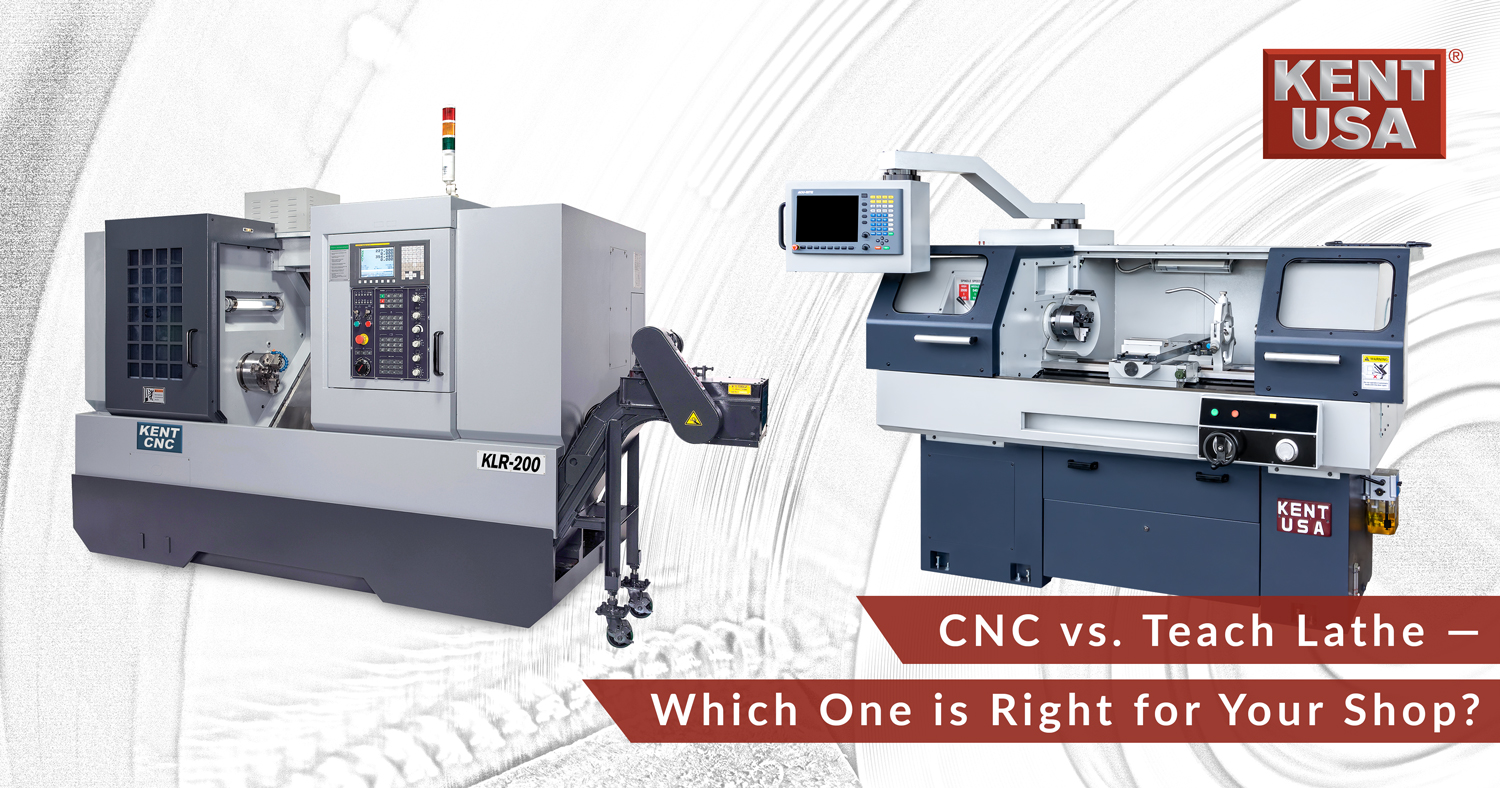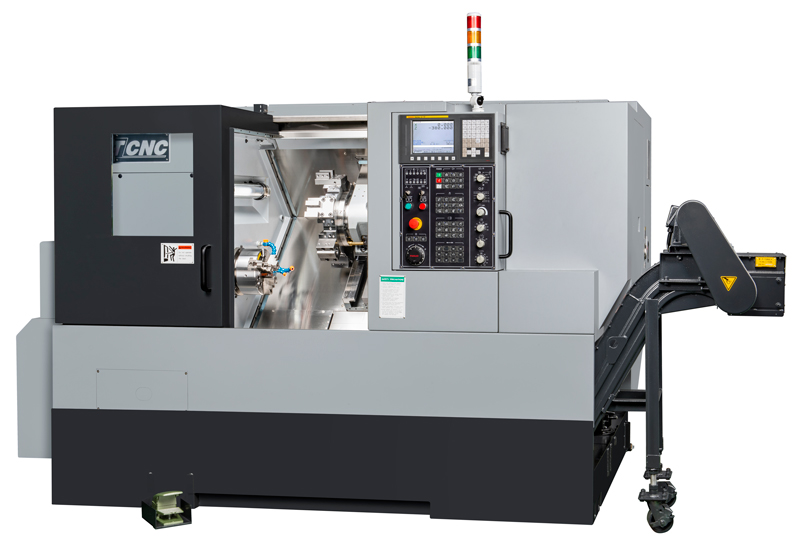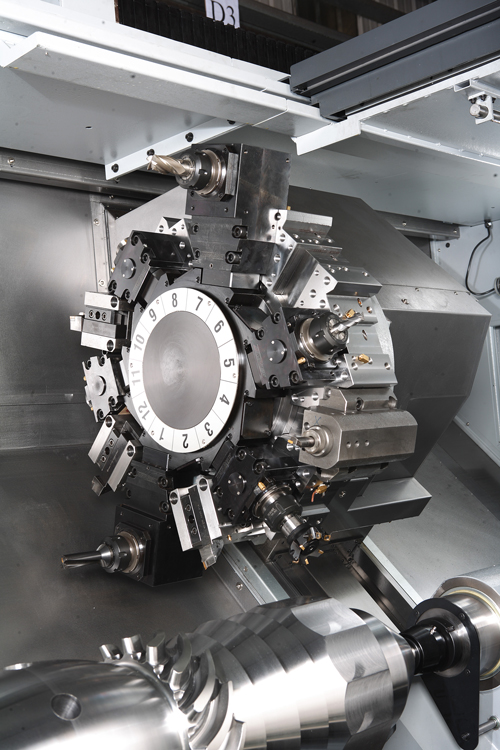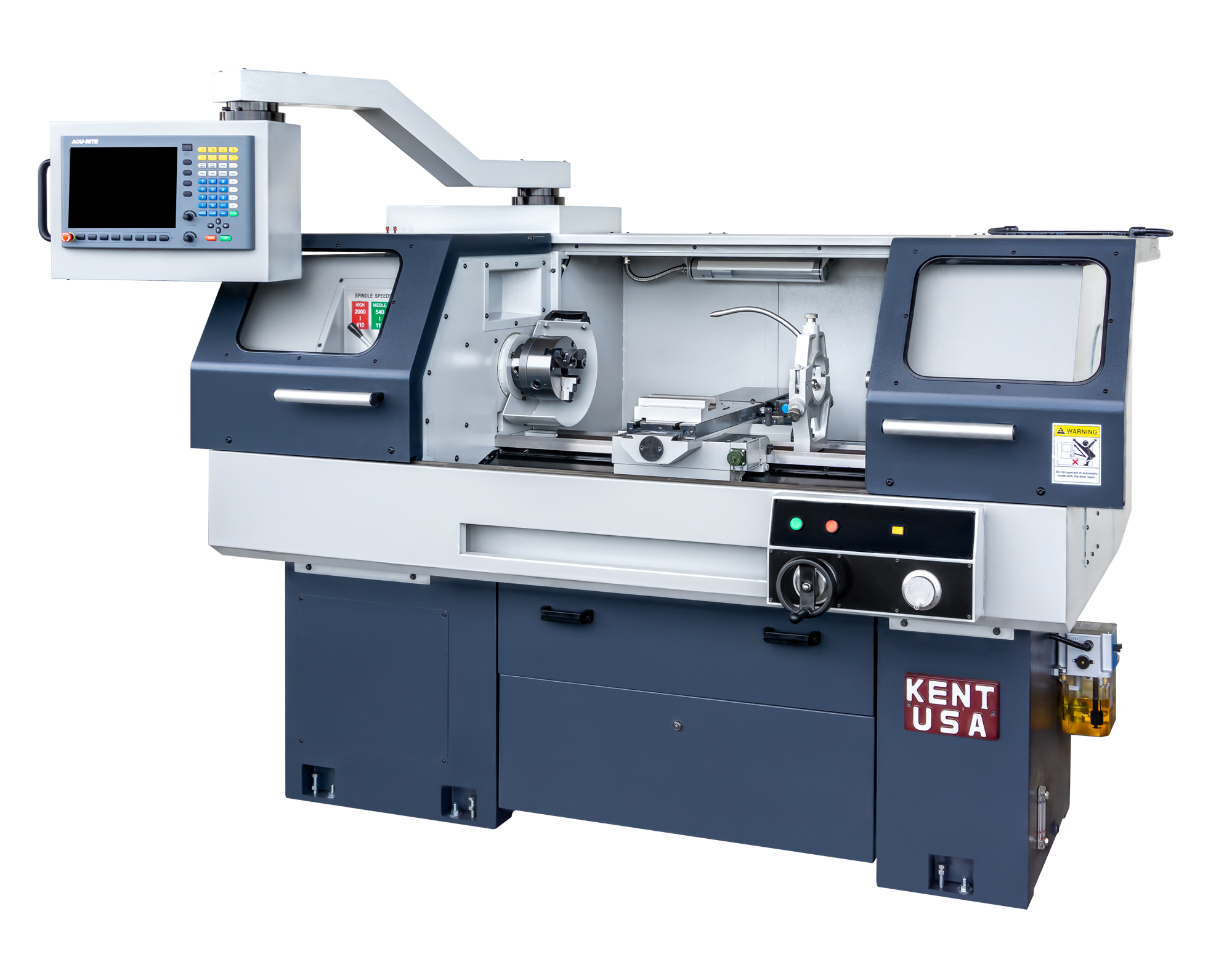Engine lathes like KENT USA®’s RML-series are extremely capable machines. And no tool room would be complete without a manual precision lathe like this CTL-618EVS. But let’s face it. Job quantities increase. So does part complexity. And if you have to cut threads all day, chasing the leadscrew dial gets tiring. Eventually, these and other factors bring shops to a tough decision: We need a better solution. The question then becomes, which is better? CNC vs. teach lathe, and why?
CNC vs. Teach Lathe Basics
So what are the differences? Let’s start with the more productive of the two. A great example is the two-axis KLR-series slant bed CNC lathe. Other models, some with milling capability, are also available at KENT USA®. Many in the industry refer to these machines as horizontal turning centers.
Regardless, an onboard industrial computer controls everything on a CNC lathe. For instance, powerful servo motors convert commands from the machine program—known as G-code—into highly precise cutting tool movements.
The indexing turret on a CNC lathe often holds eight or more tools. This allows machinists to produce many different parts with one setup. The control also manages the spindle rotation using M-code commands. Further, it manages auxiliary functions like coolant pumps and tailstock motion. When equipped with a bar feeder or robot, continuous, even unattended operation is possible.
A teach lathe has many of the same characteristics. For example, many of KENT USA®’s precision teach lathes can be equipped with an electric turret in lieu of a quick-change tool post. And like their slant bed counterparts, teach lathes are capable of automatic operation. They can also be programmed offline using a CAM package and standard G-code.
The biggest difference? On a teach lathe, you can crank the handles. They can, therefore, be operated manually, in CNC mode, or a combination of the two. In addition, teach lathes often have powerful conversational controls. These allow the operator to program on the shop floor by answering a series of questions about the part feature they wish to turn.
Which One’s For Me?
Still struggling with the CNC vs. teach lathe decision? Every situation is different, but here are some basic guidelines. If you regularly machine job quantities of ten or more, a CNC might be the best solution. The same goes for parts with very complex geometries. However, by importing the CAD file into the conversational control, even these are possible on a teach lathe.
Because they’re easier to use, tool and die shops with little or no CNC experience often prefer teach lathes. So do prototype shops and schools that want the best of both worlds for teaching their students.
Lastly, there’s budget. CNC lathes are more powerful and have higher spindle speeds. They’re therefore a bit more expensive than teach lathes. They’re also geared towards job shops and higher-volume manufacturers. Here, however, the investment costs are easily justified.
That said, both machines have their place. The best advice is to speak with a knowledgeable salesperson. Tell them your needs. Discuss budgetary concerns. And look at the big picture. Spending a bit more now might bring big returns later on, provided the solution gives the desired results.
Share this article:





